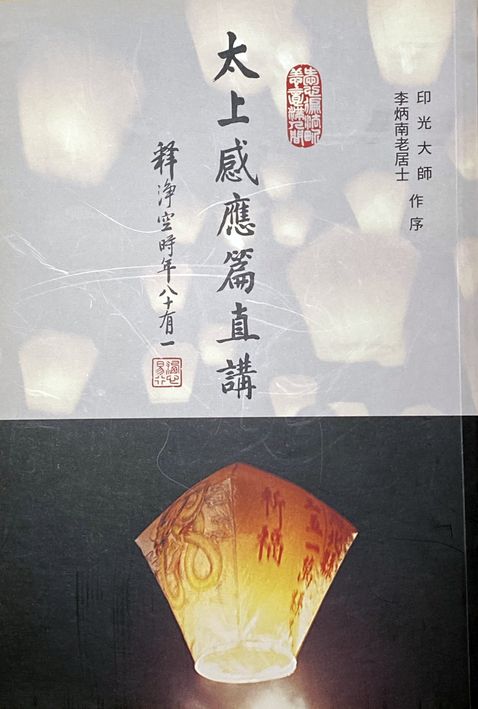
Content created: 1998-03-29
File last modified:

Unquestionably the most important literary genre for the vast majority of Chinese in later dynasties was the morality tract. Such works were generically called "good books" (shànshū 善书).
These works were full of everything from claims about cosmic justice to tired proverbs and tales of the fell fate of those who ignored them, from lamentations over the perpetually rambunctious young to injunctions against the drowning of unwanted infants, from potted biographies of moral exemplars to jingles about being kind to the senile.
Very few were productions of significant literary merit, and the whole genre tended to be scorned by the literati (as it is today). Many were written by mediums in trance through the use of one or another kind of ouija board (planchette), a practice which continues to the present. (See Jordan & Overmyer 1986, Overmyer 1976.)
Such works were (and are) printed in millions and millions of copies from small presses all over China for distribution for free, usually from the "take one" tables of popular temples. The cost was borne as an act of religious merit not just by the wealthy, but sometimes by people of quite modest means. Many incorporated introductions or annotations, often arguing for great religious merit to be had by frequent reading or chanting of the text.
The picture here (from Carus & Suzuki, p. 133) shows a printing shop devoted to the production of such works, some famed to this day, some now unknown, but all with grandiloquent titles:

Among such works, none has ever rivaled the "Tractate of the Most High One on Actions and Consequences" (Tàishàng Gǎnyìng Piān 太上感应篇), the first in the above listing.
Paul CARUS, in his introduction to a 1906 translation of the work that he prepared in cooperation with Teitaro SUZUKI, opined that, "Its editions exceed even those of the Bible and Shakespeare …" (p. 3). In the introduction to his own translation in 1918, James WEBSTER remarks that the Tractate,
… is perhaps the most celebrated tract in the annals of literature. A book that has been scattered broadcast among a people numbering hundreds of millions, and that for several centuries, must be almost without parallel.
… the widespread circulation of the text has made many of its pithy phrases part of the common talk of the people, and one cannot listen long to any conversation, even on the most mundane affairs of daily and domestic life, without hearing some expressions the origin of which is to be found in the famous little book. (Pp. 1-2)

The Tractate probably originated in planchette-writing sessions, for it has the hackneyed phrases and choppy flow that characterize many such works, as well as Chapter IV's seemingly endless and repetitive list of those human deficiencies that strike amateur moralists around the world as so especially fascinating.
The "Most High One" referred to in the title is none other than Lǎozǐ 老子, the legendary founder of Daoism, whose spirit remains to this day a frequent visitor in spirit writing séances.
The Tractate has been associated with the work of a IVth-century Daoist named GĚ Hóng 葛洪, who called himself the Master Embracing Simplicity (Bàopú zǐ 抱朴子), but the work is quite certainly not from his hand. Later scholars have suggested it may date from as late as the Míng 明 dynasty (1368-1644, period 20) or as early as the Sòng 宋 dynasty (960-1279, period 15).

Whatever its origin, by the time of European contact in the XIXth century, the Tractate had sufficient prominence to inspire French and English translations in 1816, 1828, 1830, 1835, and 1884, in addition to the early XXth-century ones mentioned above (Webster, pp. 10-11).
Chinese editions are, of course, countless. The one above right, with Mandarin pronunciation as sidescript, was printed in Táinán 台南 in 1977, bouind in a formal black plastic cover, stamped in gold, and distributed free throughout Taiwan. The one at left, beautifully printed in Gāoxióng 高雄, complete with interlinear commentary, was distributed free in temples in California as well.
If the Tractate's ubiquity has faded somewhat today, together with the "good books" literature more broadly, it nevertheless remains one of the most common religious tracts in China. And quotations and paraphrases from it may still be heard in spoken language, just as they were a century and more ago.
The translation offered here, while informed by previous ones, is my own and was prepared for use in my classes and may be freely used by other teachers in other classes. I have included the full Chinese text in both characters and romanization for the benefit of students who are also studying Chinese and who may therefore be curious about the original text. A link at the top of each page allows the reader to toggle between the bilingual arrangement and an English-only layout. To facilitate on-line reading and class discussion, I have arbitrarily divided the text into six "chapters" and have numbered the lines in each of these.
- CARUS, Paul & Teitaro SUZUKI
- 1906 T'ai-shang kan-ying p'ien:Treatise of the exalted one on response and retribution. La Salle IL: Open Court Publishing.
- JORDAN, David K. & Daniel L. Overmyer
- 1986 The flying phoenix: aspects of Chinese sectarianism in Taiwan. Princeton, NJ: Princeton U. Press.
- OVERMYER, Daniel L.
- 1976 Folk Buddhist religion: dissenting sects in late traditional China. Cambridge MA: Harvard U. Press.
- WEBSTER, James
- 1918 The kan ying pien: book of rewards and punishments. Shanghai: Presbyterian Mission Press.
The picture shows a XIXth-century tract printing shop. (reproduced from Carus 1906, p. 133)